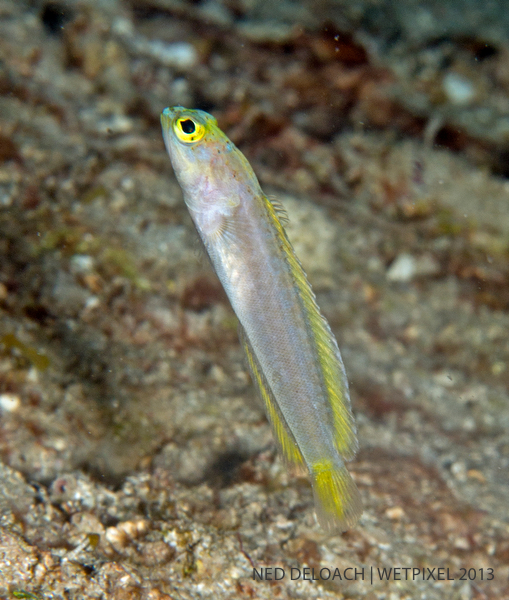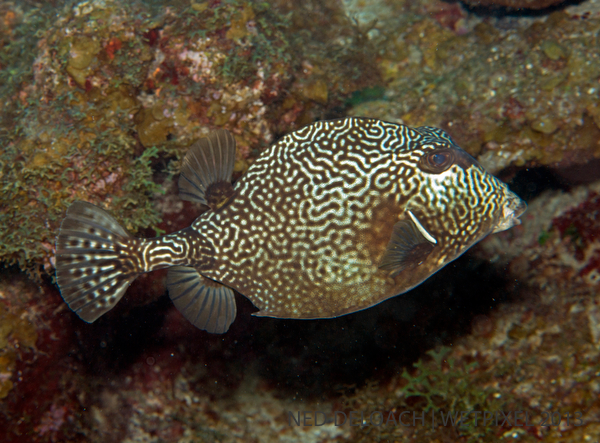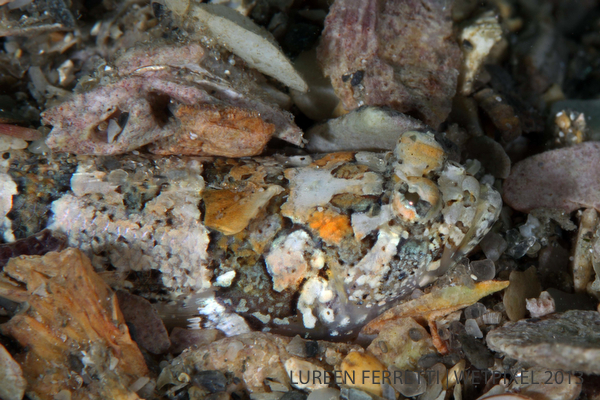The Blennywatcher Diary: August 2013

In early August, much media attention is given to the ocean’s charismatic megafauna with teeth. We love big animals too, but over the years, we have been presented with many more opportunities to dive with little fish than with big. We are happy to report that this past month, we even had some big fin action of our own: We saw a Quillfin Blenny, Labrisomus filamentosus, one of the rock stars of the blenny world. The male sports an impressive dorsal fin, two sets of bushy cirri and a wonderful hodge-podge of colored speckles - and they are large blennies - up to 5 inches in length. Although we’ve dived throughout much of their distribution range of the Bahamas and Caribbean, we’d never managed to see one. During preparation for our recent trip to Utila, Honduras, we downloaded a species list for the area from REEF’s online database and realizing that this might be our chance to finally see a Quillfin Blenny, added it to the “hit list” we prepare when visiting new destinations. And we got it on the second dive, thanks to our divemaster, Steve Smith.



Divers who dive the same sites over and over have the advantage of getting to know the resident animals and their habits - we try to do this as much as possible in places where we have that luxury. However, the Utila trip emphasized the point that it is good to visit new territory too. This was our first trip to the small island and during our two-week stay at Deep Blue Resort, we added 10 species to our life lists, including the Large-eye Toadfish, Batrachoides gilberti. Found by our friend Sandy Schmid, the goofy looking fish with its been-in-one-too-many-street-fights face provided great amusement to all. Ned spent several dives working a pair of Yellow Jawfish, Opistognathus gilberti and managed to get shots of both male and female jumping out of their burrows. These jawfish are deeper-dwelling and much more shy than their cousins, the familiar Yellowhead Jawfish.

Last summer, Sandy Canning sent an image of an oddly patterned boxfish, taken in Belize. I filed it away along with notes of another, reported several years earlier from Roatan. During our Utila trip, Ned shot a photo of one and several REEF surveyors surfaced from dives with additional reports and photos so it was time to consult several scientists. Theories range from a genetic mutation to the much less common possibility of hybridization but the bottom line is no one knows for certain. It would be interesting to find out if anyone else has seen one in an area other than Belize, Roatan or Utila.

The South Florida dive community continues to be a great source of information about all things blenny. Joe Marino sent a photo, taken off Pompano, of an unidentified fish. Because I was preparing for the Utila trip at the time, I recognized it as a Quillfin Blenny but Quillfin Blennies are not supposed to be in Florida. Dr. Ben Victor agreed and noted that “the Gulf Stream would regularly bring Caribbean fish to Florida as vagrants - so nothing would surprise me!”

Another blenny that has eluded us for years is one from the Dactyloscopidae family. Commonly called sand stargazers because they have eyes on top of their heads, these were once thought to be related to the stargazers in the family Uranoscopidae but have since been moved to the suborder Blennioidei, which includes the other 5 blenny families with which we are more familiar. While in Utila, we were shown a photo of an unusual fish, which we recognized as a dactyloscopid. Since Ned and Paul need an image for the next edition of Reef Fish Identification, the hunt was on. Although unsuccessful in finding one in Utila, we have since learned that they have been spotted quite a few times at the Blue Heron Bridge and several friends have supplied us with photos.
We’re off to Key Largo to celebrate the 20th Anniversary of REEF, the Reef Environmental Education Foundation, an organization founded by Ned and Paul and powered by volunteer divers who participate in the highly successful Fish Survey, Lionfish Data Collection and Nassau Grouper Spawning projects. To learn about these programs, visit reef.org
And don’t forget to visit our blogs, BlennyWatcher.com and MarineLifeBlog.com where we cover topics ranging from juvenile fishes to nudibranchs that eat other nudibranchs. ~ Anna & Ned DeLoach